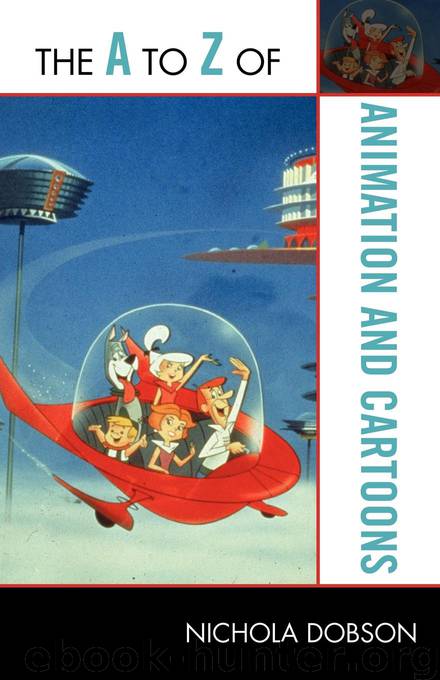The A to Z of Irish Cinema by Roderick Flynn & Patrick Brereton

Author:Roderick Flynn & Patrick Brereton
Language: eng
Format: epub
Publisher: Rowman & Littlefield
Published: 2007-04-28T16:00:00+00:00
Although many of the committee recommendations were not acted upon, the one exception to this related to a national film institute, in part because other actors took a hand in the matter. In July 1943 Devane (with the imprimatur of Archbishop John Charles McQuaid) announced the intention to establish the National Film Institute of Ireland (NFII). The following December saw a further Inter-Departmental Committee representing Education, Finance, Industry and Commerce, Agriculture and Local Government, and Public Health reconsider the original committee’s comments on educational films and films in the Irish language. This new committee recommended state funding of the Film Institute to facilitate the acquisition of a library of education films and the production of films on behalf of government departments. Thus from 1945/6 onward the NFII was in receipt of funding via the annual science and art vote of the Department of Education.
In effect the state co-opted the Film Institute, imposing upon it the dual responsibilities of a national film unit and a film education board, without giving it sufficient funds to fulfill either remit. However, from the perspective of the Catholic hierarchy, it seems likely that state funding was interpreted as a tacit endorsement of the institute as the state’s “official” film body, thus obviating the possibility that a more secular body such as the Irish Film Society might occupy that role.
In general terms, the institute identified its function as being to direct and encourage the use of the motion picture in the national cultural interests of the Irish people. However, the approach adopted by the institute to realizing this broad objective changed dramatically in the late 1970s, so that the NFII’s history can be divided into two periods—its “Catholic” phase from 1945 to 1979 and its secular one since 1979.
The Catholic phase was inaugurated by the initial grant of state funds, which permitted the institute to begin a concerted program to acquire a substantial library of educational films. By 1950 it had already amassed 800 films, although at the time relatively few schools were equipped with projectors. These were augmented by a range of films commissioned by the state in the 1940s and 1950s. Key among these were A Nation Once Again (1945), a documentary commemorating the centenary of Thomas Davis’s death, and W. B. Yeats—A Tribute (1950), although most of the films commissioned were more mundane public information shorts, relating to subjects like road safety and hygiene.
In 1948, the institute launched a journal that would remain in existence in one form or another until the late 1960s. Irish Cinema Quarterly (1948–1949) became National Film Quarterly (1950–1956), then Irish Film Quarterly (1957–1959), before eventually being retitled Vision (1965–1968).
Beyond film library, production, and journal functions, the institute operated some sporadic education outreach programs, initiating a course on educational films for teachers in 1946, and in theory it acted as an advisory committee on state film policy. In practice the institute’s influence in this regard was limited by its resources. In 1955 minister for industry and commerce William Norton requested that the NFII look into “the whole question of a film industry.
Download
This site does not store any files on its server. We only index and link to content provided by other sites. Please contact the content providers to delete copyright contents if any and email us, we'll remove relevant links or contents immediately.
The Kite Runner by Khaled Hosseini(5061)
Gerald's Game by Stephen King(4555)
Dialogue by Robert McKee(4305)
The Perils of Being Moderately Famous by Soha Ali Khan(4156)
The 101 Dalmatians by Dodie Smith(3440)
Story: Substance, Structure, Style and the Principles of Screenwriting by Robert McKee(3383)
The Pixar Touch by David A. Price(3344)
Confessions of a Video Vixen by Karrine Steffans(3230)
How Music Works by David Byrne(3157)
Fantastic Beasts: The Crimes of Grindelwald by J. K. Rowling(2975)
Harry Potter 4 - Harry Potter and The Goblet of Fire by J.K.Rowling(2973)
Slugfest by Reed Tucker(2923)
The Mental Game of Writing: How to Overcome Obstacles, Stay Creative and Productive, and Free Your Mind for Success by James Scott Bell(2835)
4 - Harry Potter and the Goblet of Fire by J.K. Rowling(2639)
Screenplay: The Foundations of Screenwriting by Syd Field(2560)
The Complete H. P. Lovecraft Reader by H.P. Lovecraft(2497)
Scandals of Classic Hollywood: Sex, Deviance, and Drama from the Golden Age of American Cinema by Anne Helen Petersen(2453)
Wildflower by Drew Barrymore(2431)
Robin by Dave Itzkoff(2368)
